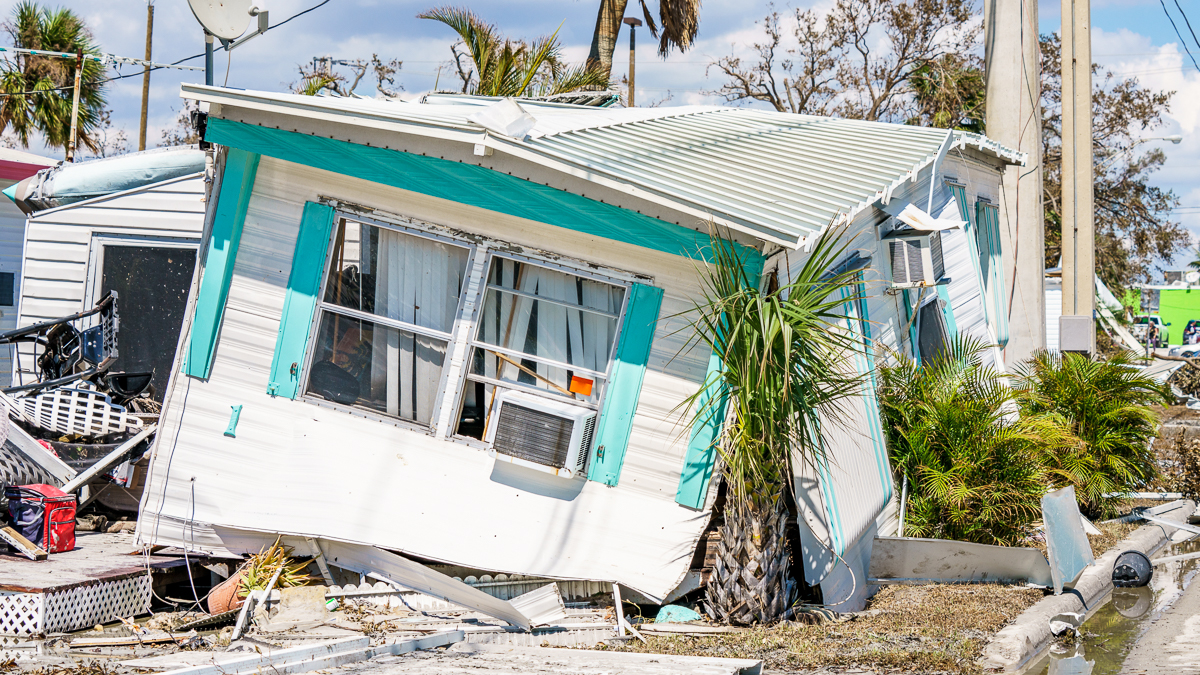Climate change means the traditional insurance model needs a major overhaul.
In the latest bout of extreme weather, Hurricane Ian came ashore, did its worst, and went back out to sea. But the costs of the disastrous storm are still being calculated – providing another reminder that the existing insurance system is completely inadequate to cover costs in the mounting climate crisis.
In Florida, South Carolina, Cuba and beyond, the damage came from the combined effects of winds reaching up to 150 mph, churning up giant waves and dumping rain in a Biblical-style deluge. At least 120 people lost their lives. The storm’s damage to U.S. homes and businesses is estimated to be between $41 and $71 billion, according to real estate data analyst CoreLogic. It’s the most costly disaster in Florida since Hurricane Andrew hit in 1992.
Coverage falls far short
For recovery from Ian and the increasingly severe storms to follow, the problem is this: Most homeowners and renters insurance will cover only the portion of the damage caused by wind, like a torn-off roof, and water damage from rain. It does not cover the considerable amount of damage caused by ocean surges on the coast and flooding along rivers far inland. For that, homeowners and business owners need flood insurance, and many don’t have it.
Even on the coast of Florida, where hurricanes are an annual threat, only about one-half of homeowners carry flood insurance.
As insurance companies pay out more and more for extreme weather disasters, the price of coverage is also on the rise. Florida premiums for flood insurance are the highest in the country and are rising the fastest. With spiraling insurance costs, many people go without it. So even on the coast of Florida, where hurricanes are an annual threat, only about one-half of homeowners carry flood insurance, according to the Insurance Information Institute (Triple-I); inland, just five percent of residents have flood insurance. Federal assistance through the Federal Emergency Management Agency (FEMA) will cover some repairs, rental assistance and other basic needs, but this falls far short of what most people need to rebuild. That means that a storm like Ian leaves many people faced with rebuilding their homes out of pocket.
Related story: Insurance companies face a climate reckoning
It’s a global issue: Floods caused more than $82 billion in damage worldwide in 2021, of which only about $20 billion was insured, according to a new study by Triple-I and CapGemini. As with most issues related to climate change, those who are most vulnerable are disproportionately at risk. The coverage gap is higher in lower-income countries and for populations experiencing poverty in wealthy countries.
Ironically, when those who don’t have or can’t afford insurance are bailed out by governments after a significant weather event, it is taxpayers who pay, so it is in the interest of governments at all levels to encourage affordable insurance, particularly as extreme weather events increase.
Bottom line: Traditional insurance isn’t enough, if it ever was, and will be more inadequate as climate warming brings more frequent and severe flooding.
A new approach to insurance
The industry is exploring new models for covering flood risk that make it both affordable and profitable, like writing policies that offer discounts to policyholders for building improvements that provide greater resiliency and reduce the likelihood and size of claims.
“We cannot just rebuild; we need to restore for resilience.”
The Triple-I/CapGemini report argues that this can happen at a whole community level, using the city of Tulsa, Oklahoma as an example. Tulsa spent decades improving its stormwater-management system, improving zoning, land use and building standards – all of which, the report says, helped insurers expand coverage while offering residents the lowest flood insurance rates in the country.
Related story: What is climate risk anyway?
“We’re at a crossroads with Hurricane Ian in terms of adapting to today’s catastrophe risk environment,” said Tom Larsen, Associate Vice President of Hazard & Risk Management at CoreLogic. “Infrastructure and building codes will evolve so that we can be more resilient ahead of what are bound to be more history-making storms in the near future. We cannot just rebuild; we need to restore for resilience.”
The bigger picture
All true. Meanwhile, the insurance industry could throw its substantial weight into preventing the worst-case climate disaster by not being a part of the problem in the first place. Under pressure from climate activists, some insurance companies are pulling away from fossil fuel projects that are at the heart of global warming. Around the globe, insurance companies are beginning to refuse to insure new coal mining projects en masse. According to the nonprofit Insure Our Future, 23 insurance companies have committed to withholding insurance for tar sands projects, and at least 12 have vowed to restrict or end underwriting for oil and gas projects.
Progress in this area is slow, but sure. In early October, the world’s biggest reinsurer, Munich Re, announced that it would no longer insure or invest in most new oil and gas projects as of April. Under pressure, many insurers backed away from a major proposed gas pipeline in Africa.
This is still just a tiny glimpse of the insurance industry’s potential to make a difference in the face of climate change. Poised as they are at the intersection of risk, investment and lending, the insurance sector had a whopping $41 trillion worth of assets under management in 2020. Who else has that kind of clout?


